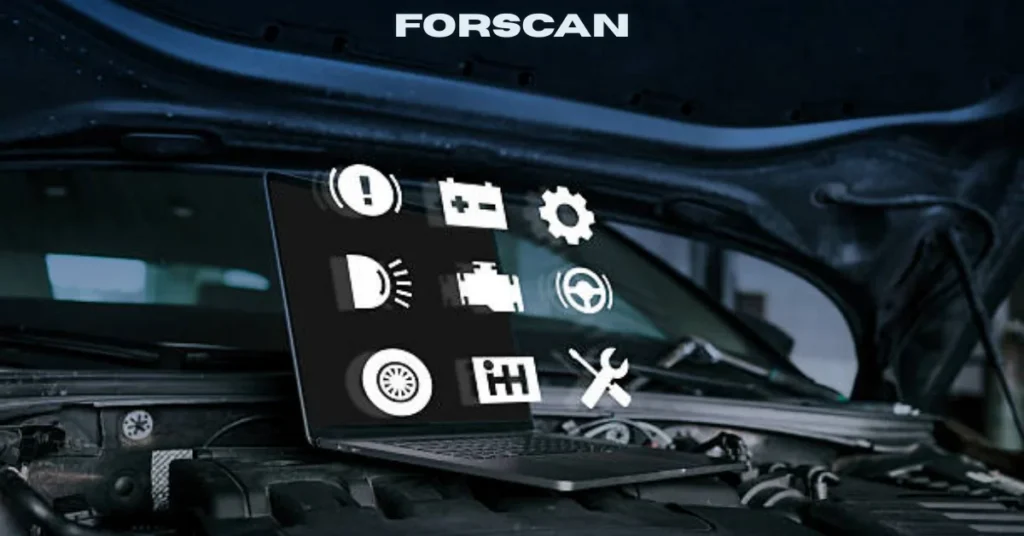Introduction to FORScan
Are you the proud owner of a Ford, Lincoln, or Mazda? If so, there’s no doubt that keeping your vehicle in top condition is important to you. But what if there was a way to dive deeper into your car’s systems and unlock its true potential? Enter FORScan—a game-changing tool designed specifically for enthusiasts like you. This software offers an array of features that can help diagnose issues, program new functions, and even customize settings tailored just for your ride. Whether you’re looking to troubleshoot minor glitches or take on advanced modifications, FORScan is quickly becoming an essential ally for 2025 automotive aficionados. Let’s explore why this powerful tool deserves a spot in every Ford, Lincoln, and Mazda owner’s toolkit!
There’s so much more to discover—browse our related posts!
Features and Benefits of FORScan
FORScan offers a range of features that make it an essential tool for vehicle owners. With its advanced diagnostics, users can access detailed error codes and real-time data. This allows for precise identification of issues, saving both time and money on repairs.
Another standout benefit is the ability to perform various programming tasks. FORScan enables customization options, letting users adjust settings like lighting preferences or automatic door locks according to personal tastes.
Its user-friendly interface simplifies navigation through complex functions. Even those new to automotive diagnostics will find it accessible. Additionally, regular updates ensure compatibility with newer models while enhancing existing features.
Moreover, FORScan supports multiple protocols used by Ford, Lincoln, and Mazda vehicles. This versatility means one tool can cater to different needs across several models seamlessly. The combination of depth in functionality and ease-of-use sets FORScan apart from other diagnostic tools available today.
Compatibility with Ford, Lincoln, and Mazda vehicles
FORScan offers exceptional compatibility with a wide range of Ford, Lincoln, and Mazda models. Whether you own a classic vehicle or the latest release, this tool is designed to cater to your needs.
It supports numerous systems within these vehicles. From engine diagnostics to advanced features like key programming and module configurations, FORScan has you covered.
The software seamlessly interacts with various onboard systems across different model years. This broad compatibility makes it an invaluable resource for both DIY enthusiasts and professional mechanics alike.
Importantly, updates are regularly released by the developers. These enhancements ensure that newer vehicles are continuously supported as technology evolves in the automotive world.
Whether you’re troubleshooting issues or customizing settings, knowing your specific model’s compatibility gives peace of mind when using FORScan.
Understanding OBD-II Diagnostics and Programming
OBD-II, or On-Board Diagnostics II, is a crucial system that monitors vehicle performance and emissions. It became standard in all cars sold in the U.
S. after 1996. This technology allows mechanics and car owners to access real-time data about their vehicles.
Using an OBD-II scanner can reveal trouble codes that indicate specific issues within your car’s systems. These codes help diagnose problems quickly, saving time and money on repairs.
Programming goes beyond simple diagnostics. It allows users to modify settings for various components of their vehicle, enhancing performance or personalizing features. FORScan excels here by offering extensive programming capabilities tailored for Ford, Lincoln, and Mazda models.
Understanding these tools empowers you as a car owner to take control of your vehicle’s health while maximizing its potential on the road.
Step-by-Step Guide on How to Use FORScan
Getting started with FORScan is straightforward. First, download the software from the official website and install it on your laptop or compatible device.
Next, connect your OBD-II adapter to your vehicle’s diagnostic port. This port is usually located under the dashboard near the driver’s seat. Ensure you have a reliable connection for accurate readings.
Once everything is connected, launch FORScan. The program will automatically detect your vehicle’s system configurations.
Now, navigate through the user-friendly interface to access various features like diagnostics and module programming. Select what you need based on your goals—whether it’s checking error codes or customizing settings.
After making adjustments or gathering data, remember to save any changes before disconnecting. Regularly updating FORScan can enhance its functionality and compatibility with new updates in automotive technology.
Advanced Features and Customizations
FORScan offers a wealth of advanced features that go beyond basic diagnostics. Users can delve into module configurations, enabling custom settings tailored to their preferences. This flexibility allows for adjustments like changing the behavior of lights or unlocking hidden functionalities in your vehicle.
One standout feature is its ability to perform advanced programming. With FORScan, you can reprogram specific modules, ensuring they align perfectly with your unique driving experience. This capability sets it apart from standard diagnostic tools.
The software also provides access to live data streams, allowing you to monitor real-time performance metrics while driving. By analyzing these parameters, you can fine-tune vehicle settings and optimize efficiency.
Customization doesn’t stop there; users can create personalized profiles for different vehicles within the app itself. This makes switching between cars seamless and efficient without losing any previously set configurations or diagnostics history.
Hungry for more knowledge? Our full library is open to explore!
Troubleshooting Tips and Common Mistakes
Troubleshooting with FORScan can sometimes feel overwhelming. Start by ensuring your vehicle’s battery is fully charged. A low battery can lead to false error codes.
Next, always verify that you’ve connected the OBD-II adapter properly. Loose connections can cause communication issues between the software and your vehicle’s computer.
If you encounter an unexpected error, take a moment to check for software updates. Using outdated versions might hinder performance or compatibility.
Another common mistake involves misunderstanding fault codes. Take time to research specific codes thoroughly before making assumptions about what repairs are necessary.
Don’t overlook user forums and communities dedicated to FORScan enthusiasts. They often provide invaluable insights and solutions from experienced users who faced similar challenges. Engaging with others can enhance your understanding significantly as you navigate through troubleshooting tasks.
Comparison to Other Diagnostic Tools
When evaluating FORScan against other diagnostic tools, its unique features stand out. Many traditional scanners offer basic fault codes and live data but lack in-depth customization options.
FORScan excels with its advanced capabilities tailored specifically for Ford, Lincoln, and Mazda vehicles. Unlike generic OBD-II scanners, it provides access to proprietary systems and modules that most competitors cannot reach.
The interface is user-friendly yet packed with powerful functionalities. Users can perform specific actions like reprogramming modules or enabling hidden features within their vehicle’s software.
While some tools may come at a higher price point without offering the same depth of analysis or customizability, FORScan remains affordable and effective. Its focus on manufacturer-level diagnostics makes it a superior choice for enthusiasts seeking greater control over their vehicles’ performance and settings.
Real-Life Success Stories from FORScan Users
Many users have experienced transformative results after using FORScan. One Ford F-150 owner reported being able to unlock hidden features, enhancing their driving experience significantly. Instead of paying for dealership services, they adjusted settings directly from home.
Another success story comes from a Lincoln MKZ driver who managed to resolve persistent warning lights on the dashboard. With just a few clicks in FORScan, they diagnosed the issue accurately and saved hundreds on unnecessary repairs.
Mazda enthusiasts also share their joy with CUSTOMIZATIONS made possible through FORScan. A user transformed their vehicle’s lighting system, creating a unique look that turned heads wherever they went.
These stories highlight how practical and effective this tool can be for everyday drivers looking to maximize their vehicles’ performance and features. Each account showcases the potential savings and satisfaction that come with taking control of your car’s systems through technology like FORScan.
Conclusion: Why FORScan is a Must-Have Tool for Ford, Lincoln & Mazda Owners in 2025?
FORScan is more than just a diagnostic tool; it’s an essential companion for every Ford, Lincoln, and Mazda owner in 2025. Its ability to perform advanced diagnostics and programming sets it apart from conventional tools. This software not only helps you identify issues but also allows you to customize your vehicle’s settings.
The compatibility with various models ensures that whether you’re driving a classic Ford or the latest Lincoln SUV, FORScan has you covered. Understanding OBD-II diagnostics becomes easier with its user-friendly interface, making even the most complex tasks manageable.
Many users have shared their success stories of using FORScan to enhance performance and resolve persistent problems. The step-by-step guide simplifies usage for beginners while offering advanced features that seasoned mechanics will appreciate.
With troubleshooting tips readily available, common mistakes can be easily avoided. Compared to other diagnostic tools on the market, FORScan stands out due to its comprehensive functionality tailored specifically for these brands.
Investing in FORScan means investing in peace of mind as a vehicle owner. It empowers you with knowledge about your car and gives you control over its performance enhancements—an invaluable asset moving forward into 2025 and beyond.
Don’t miss out on more great reads—click through our featured posts!






